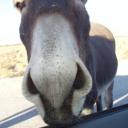Yahoo Answers is shutting down on May 4th, 2021 (Eastern Time) and the Yahoo Answers website is now in read-only mode. There will be no changes to other Yahoo properties or services, or your Yahoo account. You can find more information about the Yahoo Answers shutdown and how to download your data on this help page.
Trending News
Do you have knowledge about gravity Surveys?
Short but relevant answering.
Salt tectonic areas are of great interest for the oil industry. If you are given the task of conducting gravity survey in that area,
a- how you plan the survey,
b- what sort of data you will collect,
c- how you will process data for Bouguer anomalies
d- what is advantage of calculating Bouguer anomalies
e- what sort Bouguer anomaly will look like on Bouguer anomaly map
f- how interpretation of Bouguer anomaly map is done
g- how you will convince the client that gravity technique is most useful in salt tectonic areas
2 Answers
- RonLv 77 years agoFavorite Answer
I have conducted a large gravity survey.
You'll need very detailed elevation data (within a foot accuracy). I used all the benchmarks in my survey area. For other data points, you'll need extremely accurate GPS or traditional surveying to obtain elevation data. Contour lines are not accurate enough for gravity measurements. Topographic maps are needed to locate benchmarks, gentle terrain, and to approximate local topography.
You'll need to know the positions of the Moon and Sun at the time of data collection in order to eliminate their effects on the gravity meter.
You'll need details of the local topography. Nearby mountains and high relief affect gravity readings. If possible pick locations of low relief for your gravity stations, or areas where the topography can be simply characterized geometrically.
You'll need to locate the absolute stations that have been established in the area. They will serve as the base values that your relative values will be based upon.
Be sure to mark your gravity stations with flagged large nails or other type marker in case you need to return and measure gravity again.
Also, if possible, avoid areas of high density, such as lava flows and ore bodies, because they can really complicate the assumptions you make about the subsurface. You are trying to "see" into the subsurface, so simplify surface conditions as much as possible and take advantage of detailed work already done (such as elevation benchmarks by surveying crews and absolute gravity stations).
- OntorejoLv 77 years ago
a-
collect geological data, geological maps, topographic maps and satellite imagery
b-
separate geological data that relate to the influence of gravity, for example mineral distribution map, map of tectonics and other data as an important secondary data, while the other used geological data as supporting secondary data. Create a map of plan track observation points (made a few stanzas) partially bring spaciousness and partly stored in base camp. Specify one or more base point to perform a calibration every time after work carried out observations. Every measurement results are recorded and plotted on a map work
c-
analysis of Bouguer anomaly can use available software
d-
Bouguer anomaly is very important to distinguish the magnitude of value of gravity at a point of observation.
e-
Data Bouguer anomaly who already obtained and plotted on a map and drawn a line in common value as contour lines depicting a similarity value of anomalies.
f-
use value of the gravity at that location already ascertained as containing salt as reference value so that we can draw borders the salt based on that value.
g-
Area containing the salts have low density when compared to the density of rocks in General so that through gravity survey will produce the contras Bouguer anomaly





